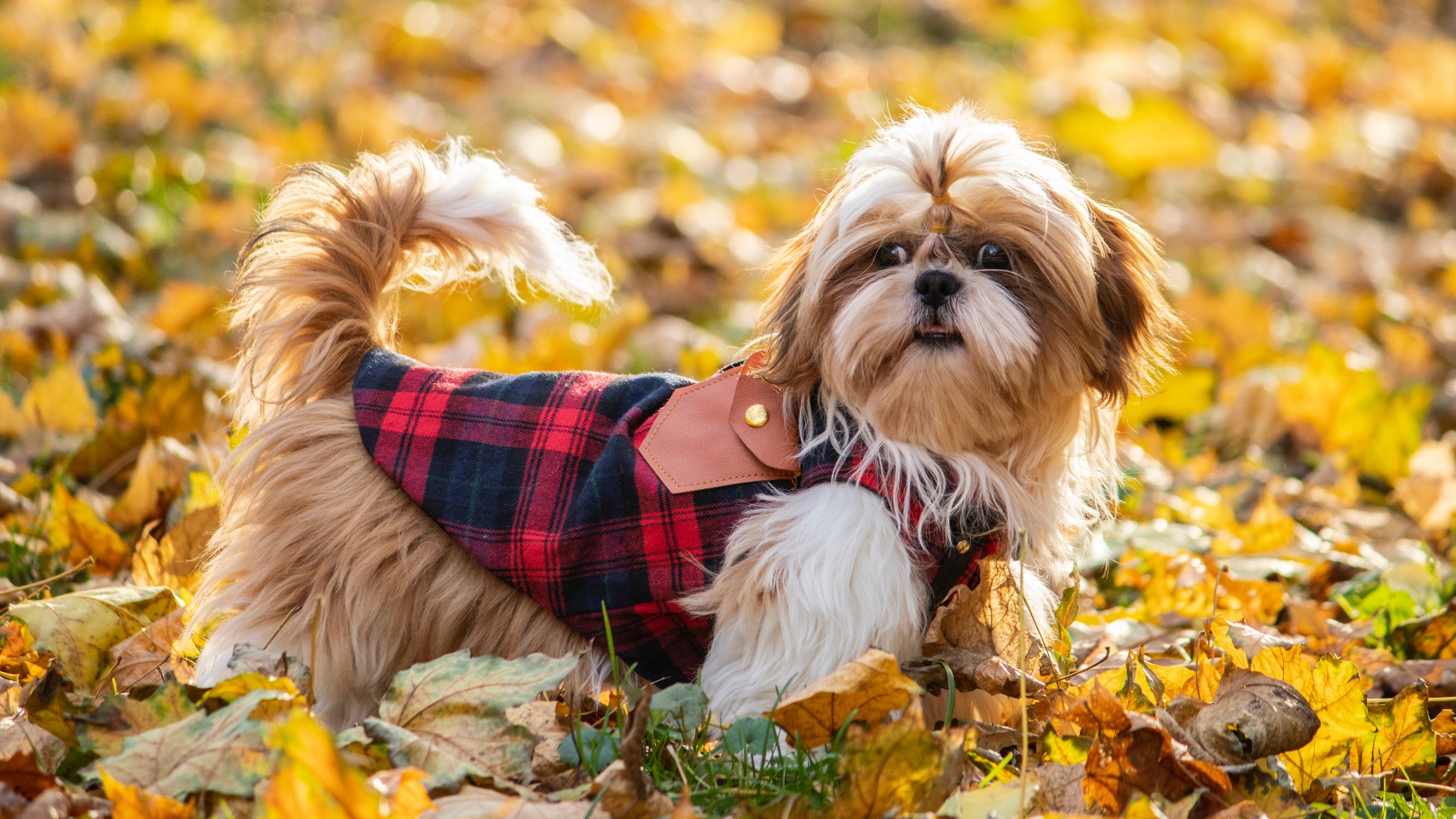
Learning how to keep a dog warm outside is super important as the weather starts to get colder or if you live in a colder climate.
While most healthy dogs can cope pretty well in colder weather we want to make sure we are doing our best to keep them safe from things like frostbite and hypothermia. This is particularly important for dogs that spend a good amount of time outside.
Things like a coat, a warming harness, and keeping their paws clean and dry are just a few of our top tips to keep them cozy until they get back home and can warm up in one of the best luxury dog beds.
Dr. Hannah Godfrey also weighs in on when it may be too cold to take your dog outside. Let’s dive in to find out everything you need to know about protecting your dog in the cold temperatures.
How to keep a dog warm outside
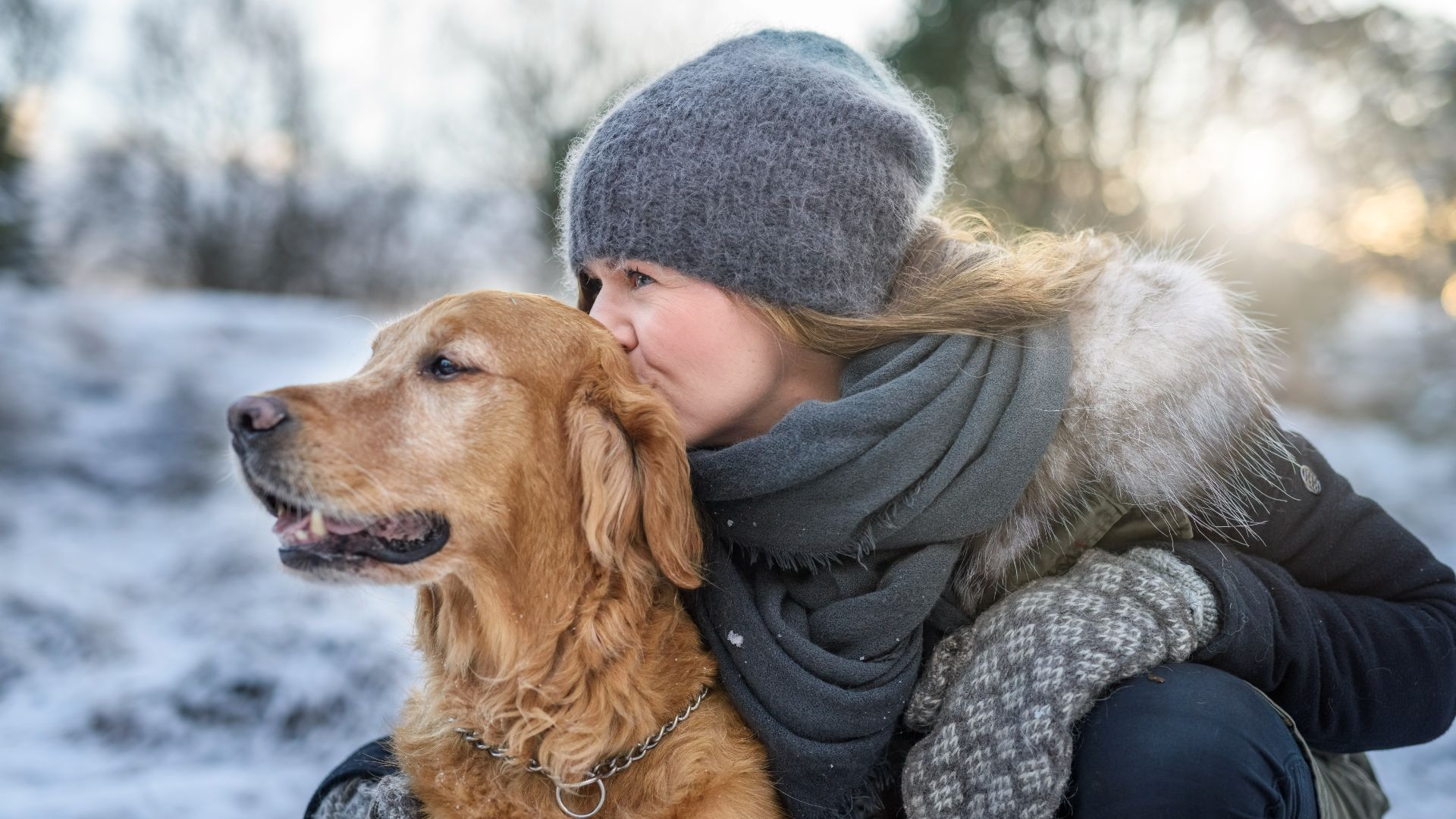
1. Dress for the elements
Shopping for one of the best dog coats is a wise investment if you have a short-haired dog who tends to spend a large amount of time indoors. Shorter-haired breeds and those with thin coats don’t have the same level of insulation as breeds with long and thick coats, so dressing them warmly is a good idea.
Dogs that are of northern descent tend to have very heavy coats and because they were bred to be snow dogs, they’re well acclimated to the cold. With these breeds, popping them into a coat can actually cause them to overheat as their fur already offers a level of protection from the cold that shorter-haired breeds don’t get.
Regardless of your dog’s breed, boots can be well worth considering as their little paw pads may come into contact with ice-melting chemicals or sharp pieces of ice that can cause pain and irritation. Some chemicals are also poisonous for dogs and given that dogs often lick their paws, boots can protect them from ingesting these.
When deciding whether or not to dress your pet for the outdoors, it’s worth remembering that if you’re cold, chances are your dog is too, especially if they’re a short or thin-coated breed, so always err on the side of caution if your dog isn’t of northern descent.
2. Keep paws clean and dry
Specially designed dog boots are a great way of ensuring your pooch’s paws stay clean and dry, but it can take time for some dogs to get used to wearing them. While some dogs will happily slip their feet into their booties, others will be more reluctant, so we recommend introducing them gradually.
Boots can feel unnatural and uncomfortable, but with the right approach, most dogs can get used to wearing them. Start by putting a boot on one paw while your dog is inside and look to reward your pup with the best dog treats. You can then take the boot off and repeat the process so that your dog links the boots with a positive reward. Once they’re comfortable with one boot, add another until they’re wearing all four and able to walk around the house. After that, you’re ready to venture outside!
If your forever friend refuses to wear boots, then we recommend you learn how to moisturize dog paws and do this every time your pup comes in from being outside. Cold weather can dry out their pads and cause painful cracks, so regularly moisturizing them with a product like Shea Butter or Beeswax can help keep them in tip-top condition.
You’ll also want to ensure you wash and dry their paws when they come inside. If they’ve not been wearing boots, this will remove any potentially harmful chemicals from their feet, and drying them off will stop the dampness from getting between their nails and causing an infection.
3. Opt for shorter walks
On extremely cold days it can be helpful to shorten your walks so that your dog isn’t exposed to chilly temperatures for long periods of time. A good rule of thumb for healthy medium to large dogs is to walk them for 30 minutes if the temperature is above 20 degrees F. Smaller dogs should be out for no more than 20 minutes.
If the temperature falls below 20 degrees, we recommend forgoing the walk and playing a few of our favorite indoor games for dogs instead. These will still give your pup a great mental and physical workout but in a warm, dry, and safe environment.
4. Use a warming dog harness
Did you know that you can actually buy a warming dog harness for your pooch? It’s true! This accessory has become more popular in recent years and it’s a particularly wise investment if you live in an area that is prone to heavy snow and regular sub-zero temperatures.
Most warming dog harnesses come with a gel pack that sits against the chest and belly area where your pup generates the most heat. The warmth that comes from their body warms the pack, helping to keep them toasty.
You’ll even find a few that have removable packs that can be heated in the microwave and then popped back inside the harness, although do exercise caution with these and follow the instructions to make sure the pack doesn’t get too hot.
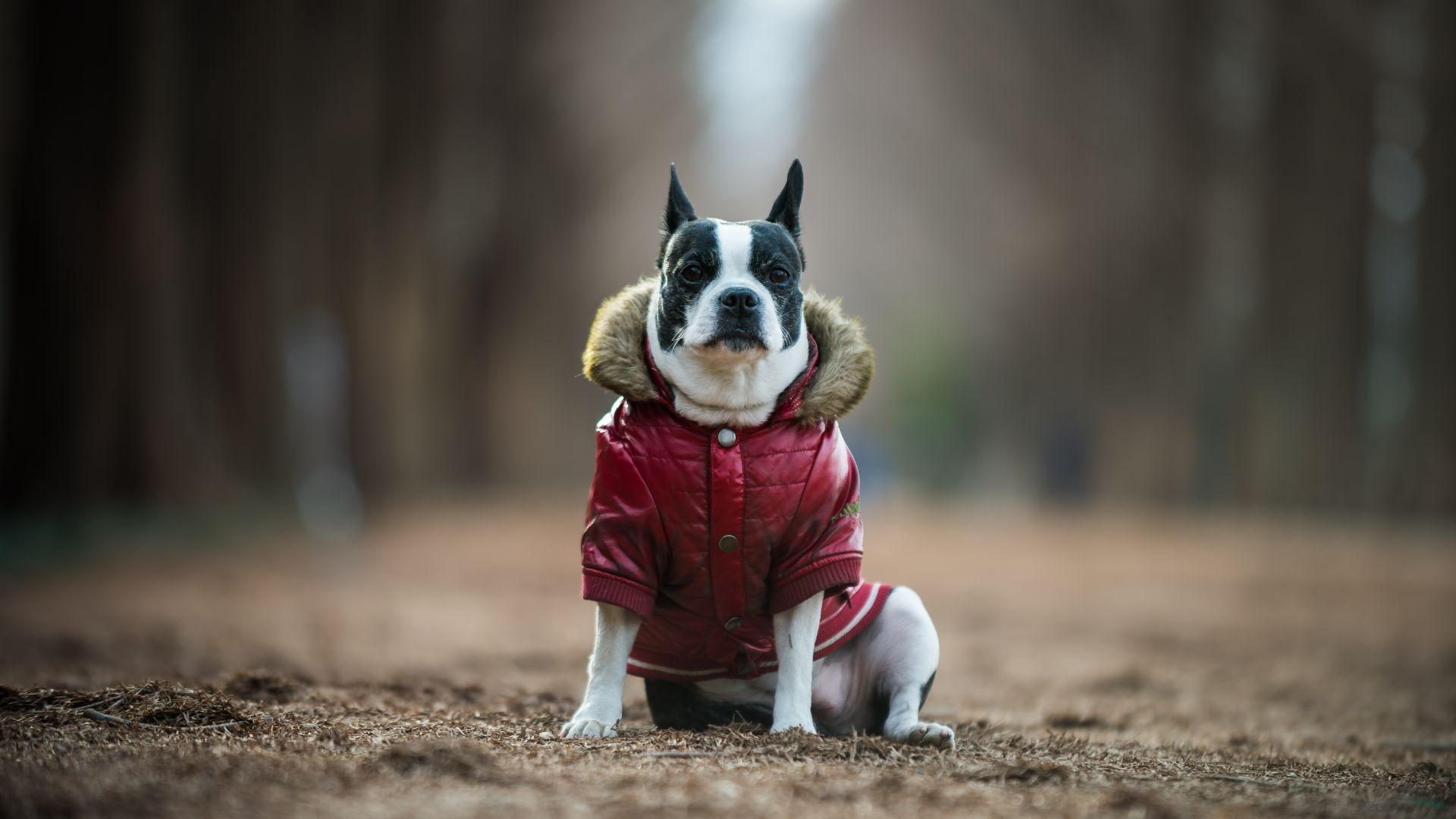
5. Let their fur grow
Having one of the best dog grooming kits in the cupboard can be a great way to cut down on costly trips to a professional groomer, but in the cold months, it can be a good idea to let your dog’s coat grow a bit longer.
According to Dr. Jessica Romine, a board-certified internal medicine veterinarian at BluePearl Pet Hospital in Southfield, Michigan, fur acts as a natural insulator and can help protect your pooch against the elements.
“Dog hair is a wonderful insulator, and many breeds have a double coat, with an outer layer of guard hairs to protect from the elements and a downy underlayer to contain heat. Ideally, dogs will be allowed to grow their full coats,” she says.
Although no amount of fur can keep your dog safe if they’re exposed to extremely cold weather for long periods of time, a longer coat can definitely make life more comfortable on those short daily walks.
6. Provide a shelter and insulate it
We don’t recommend that dogs be kept outside during the coldest months of the year, but we understand that in some cases, this is going to be unavoidable. For dogs that must sleep outdoors, purchase a quality shelter and ensure it’s insulated.
When selecting a shelter you’ll want one that has a sloped roof to encourage the water and snow to run off it. It needs to be raised up off the ground so that the floor stays dry and you’ll want plenty of blankets and one of the best dog beds to go inside it - a self-warming bed is a great choice.
Finally, place the entrance away from the wind and keep the doghouse where you can see it so that you can keep an eye on your forever friends and make sure they’re okay.
7. Keep them well-fed and watered
Like us humans, dogs expend more energy if they have to work to keep their body warm, so you may find you need to add more of the best dog food to their daily diet. Dr. Romine says dogs are most comfortable in temperatures between 65 and 85 degrees Fahrenheit but below that, they start to use up energy to maintain their body heat.
“On average, the metabolic rate increases by about five calories per pound of body weight per degree Fahrenheit (about 10 calories per degree Celsius) if they are inactive or resting. That means they might have up to a 100 percent increase in metabolism if left in 40 degrees [Fahrenheit] weather for a prolonged period,” she explains.
We recommend speaking with your vet if you’re at all worried about your dog’s calorie intake as they’ll be able to advise you on whether any changes need to be made to your dog’s diet to get them through the winter.
And while the temperature may be cold, it’s still important that your dog gets enough fluid as this will help them to stay warm too and keep their body functioning properly. Consider a heated water bowl if your dog spends a lot of time outdoors and check their bowl at least twice a day to make sure the water isn’t frozen or contaminated.
How to tell if your dog is cold
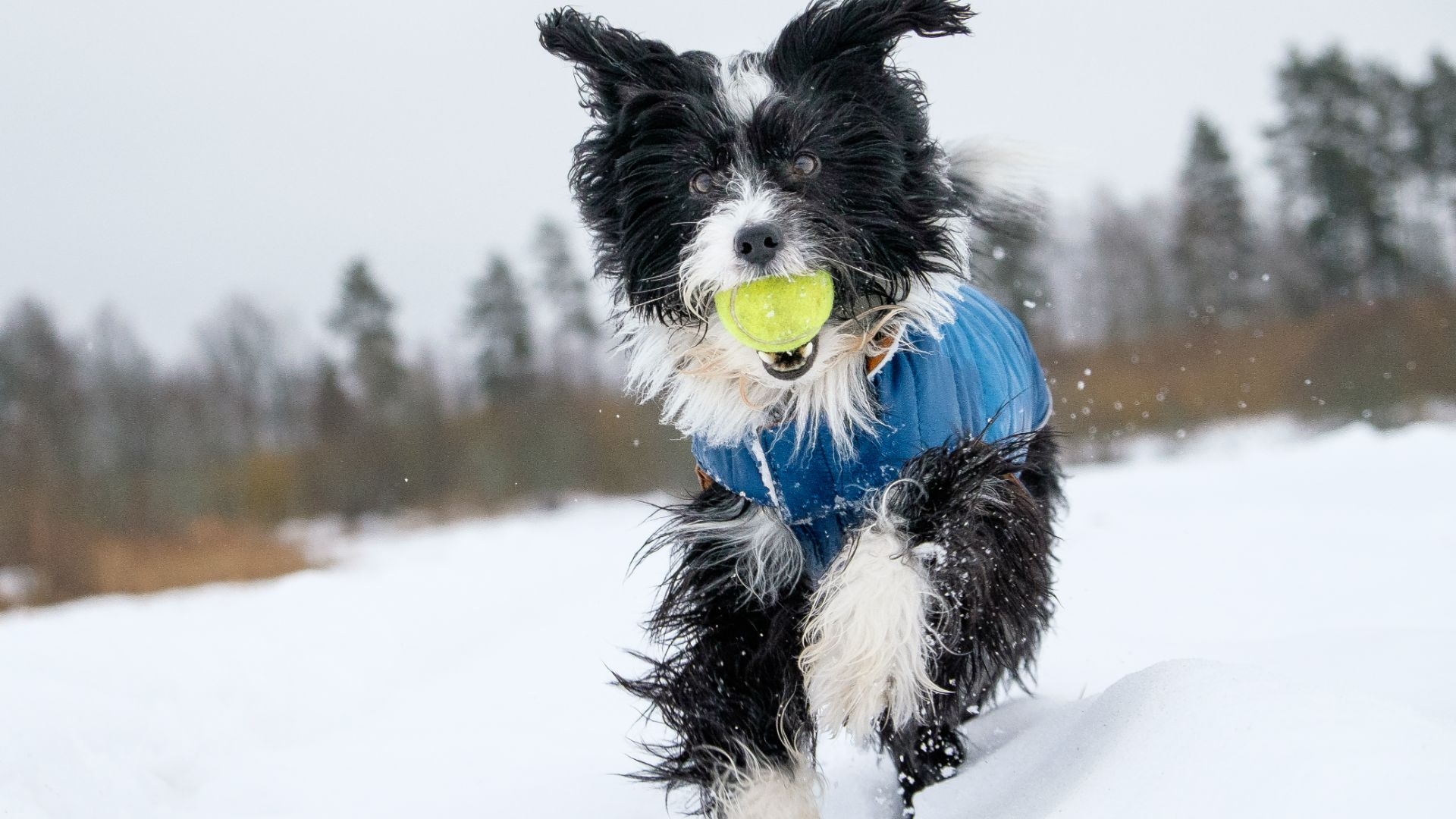
A dog’s cold-weather tolerance will vary depending on their physical make-up, activity level, and health, and if that doesn’t make it hard enough to figure out if your dog is feeling comfortable, they’re also unable to speak up as we humans can.
Thankfully, there are a few common signs that are a good indicator that your pup is feeling the chill, so keep your eyes peeled for the following...
- Shivering or trembling
- Hunched posture with a tucked tail
- Reluctance to keep walking
- Lifting a paw off the ground
- Ears and nose feel extremely cold to the touch
When you’re out walking with your dog, monitor their body language and if they show any of the signs above, get them back indoors where they can warm up.
How do I know when it’s too cold for my dog to go outside?
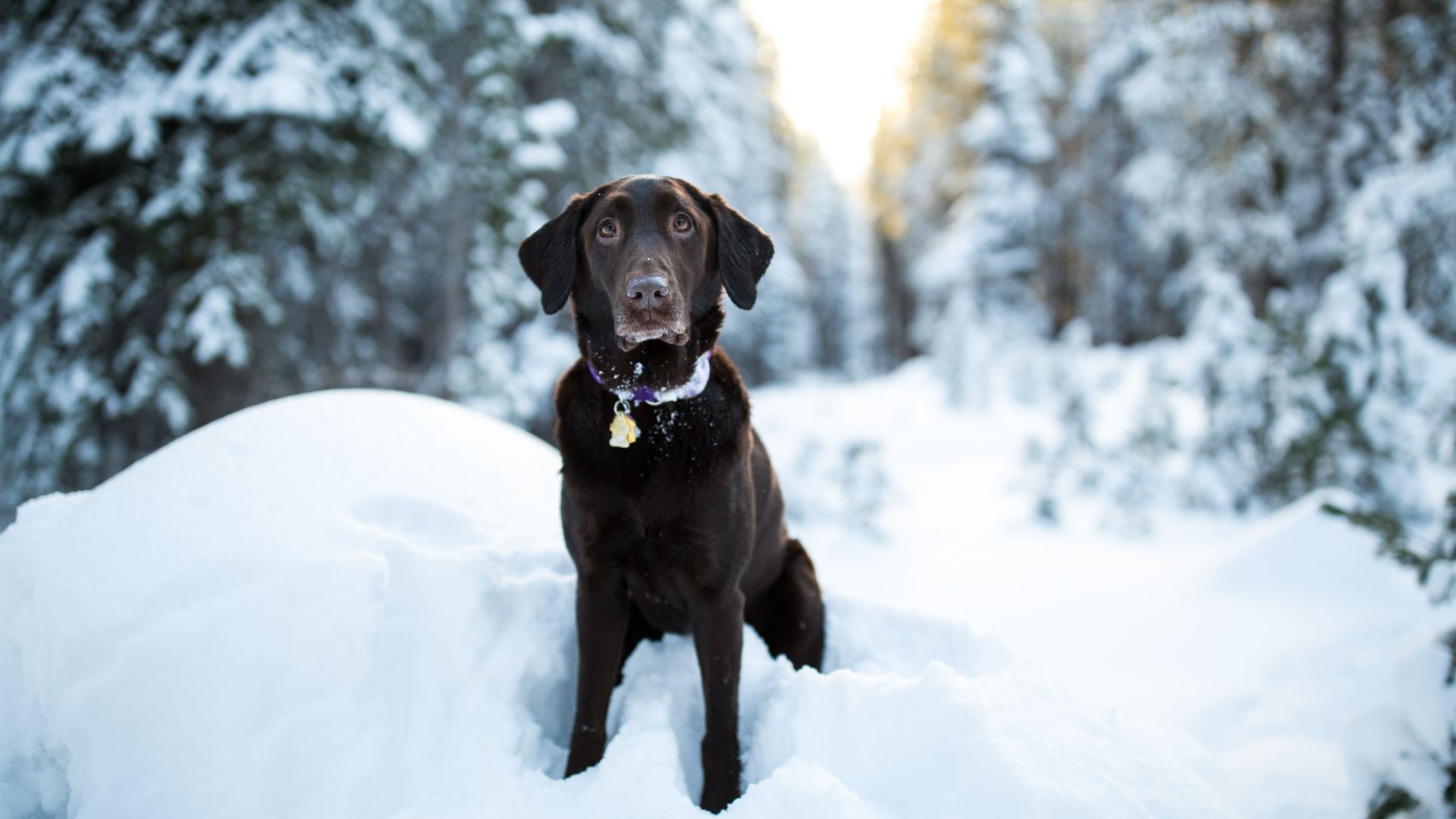
How cold is too cold will vary depending on your dog’s breed and age with thicker-coated breeds from colder climates having a higher tolerance for low temperatures than short-haired breeds, small dogs, senior dogs, and puppies.
Older dogs and puppies have a more difficult time regulating their body temperature than adult dogs, so they need to be more closely monitored in the cold and their exposure needs to be limited.
Dr. Godfrey says, “It’s usually safe to take your dog outside briefly, even if it’s really cold. However, this is not the case with young puppies because they struggle to maintain their own body temperature and need to be kept warm. It’s widely stated that temperatures below 44 degrees Fahrenheit could be too cold for dogs, however, even these temperatures are unlikely to be a problem for medium-sized adult dogs, especially if they have long fur.”
What are the best dog breeds for colder weather?
The best dog breeds for cold climates are typically pups with lots of fur and those who have been bred in colder climates. Think of breeds such as Siberian Huskies and Alaskan Malamute. Bernese mountain dogs and St. Bernard’s will also make the cut.
On the other hand, if you have one of the best dog breeds for warm climates, you’ll want to take extra if they are going to be out in the cold. These breeds will struggle to stay warm in the cold and should not be outdoors for too long.
Found this helpful? Do dogs get cold? How cold is too cold for dogs in the winter?







